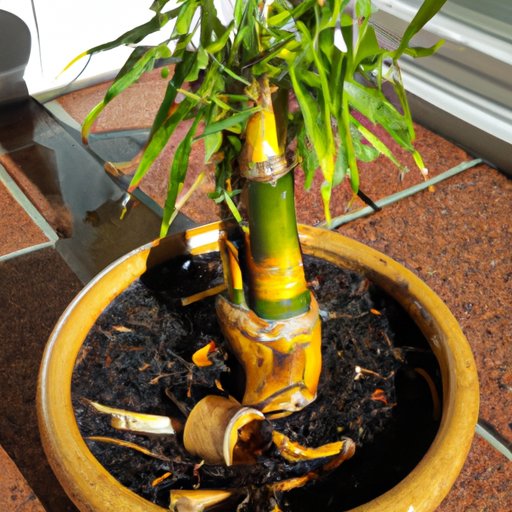Introduction
Bamboo plants are a popular choice for many people who want to bring some natural beauty into their home or office. Not only do they look great, but they also require minimal care and maintenance. However, it is important to understand the basics of how to take care of a bamboo plant in order to ensure its health and longevity.
Bamboo plants belong to the grass family, and there are over 1,400 species of them. They range in size from tiny to towering, and are known for their rapid growth rate. While they are relatively low-maintenance, proper care is still important in order to keep them healthy and looking their best.
Choose the Right Potting Soil
The first step in taking care of a bamboo plant is to choose the right potting soil. The soil should be well-draining, as bamboo does not like to have wet feet. You can find potting soil specifically formulated for bamboo at most garden centers. If you are unable to find one, you can use a mixture of peat moss, compost, and perlite.
When choosing a potting soil, make sure it is free of weed seeds, disease organisms, and chemicals. Also, avoid using soil that has been treated with fertilizer, as this can burn the roots of the bamboo plant.
Water Regularly
Bamboo plants need regular watering, especially during the summer months when they are actively growing. During this time, water your bamboo plant approximately once a week, or whenever the top inch of soil feels dry. In the winter, water less often, as the plant will not be growing as quickly.
It is important to water your bamboo plant deeply, rather than lightly sprinkling the soil. This helps encourage the roots to grow deeper into the soil, which will help the plant become more resilient and better able to withstand drought conditions.
Provide Ample Sunlight
Bamboo plants prefer bright, indirect light. Place your plant in an area that gets at least four hours of sunlight each day. Be sure to rotate the plant periodically so that all parts of the plant get equal amounts of light.
If you are growing a bamboo plant indoors, you may need to provide additional light with a grow light. This is especially true during the winter months when natural light is limited.
Prune as Needed
Bamboo plants will occasionally need pruning to maintain their shape and size. When pruning, use sharp, clean scissors or shears and avoid cutting too much at once. Pruning encourages new growth and helps keep the plant looking its best.
Be sure to inspect your bamboo plant regularly for signs of pests or diseases. If you notice any problems, treat them immediately to prevent further damage to the plant.
Fertilize Occasionally
Fertilizing your bamboo plant can help promote healthy growth and lush foliage. Use a balanced, slow-release fertilizer and apply it according to the manufacturer’s instructions. Generally, you should fertilize your bamboo plant every two to four weeks during the growing season.
Avoid using too much fertilizer, as this can burn the roots of the plant and cause damage. It is also important to flush the soil occasionally to prevent buildup of salts from the fertilizer.
Conclusion
Taking care of a bamboo plant does not have to be complicated. By following these simple steps, you can ensure your bamboo plant stays healthy and looks its best. Be sure to review the instructions before planting, and always remember to provide plenty of water, sunlight, and fertilizer.
With proper care and attention, your bamboo plant can last for years. Enjoy the beauty and tranquility that your bamboo plant brings to your home or office.


